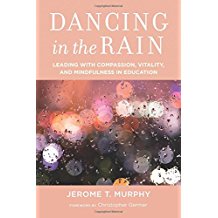
Accreditors require it. Schools mostly support it. We all know we should be doing it. Professional development is an essential aspect of the educator’s responsibility, but what is it and how should it be delivered, received, shared, and reviewed in a school or program?
To understand professional development, it’s useful to first think about what we mean by ‘professional.’ Anyone in the workplace can be said to ‘act professionally’ – which means caring about what they do, showing respect for others, knowing their field, and working conscientiously and honestly. But not every job is considered a ‘profession.’ There are plenty of definitions of profession, but I like to think of a professional as someone whose job involves making impactful decisions based on knowledge and experience gained through specialized education and training. Hence, doctors, lawyers, architects, and engineers are generally considered professionals. And educators are professionals too.
Professionals don’t work with standardized products. A person making fast food meals in a restaurant must follow highly specified procedures and produce a meal for each customer that is identical to the next. If there is uncertainty, it’s referred to a supervisor or a manual. This kind of work, important though it is, doesn’t fit the definition of professional
Professionals deal with the non-standard: people, situations, procedures, materials. And they have to use their judgment to make the best decision to achieve the optimum outcome. Educators encounter new students every year, term, or even week, each student having unique qualities, motivations, learning experiences, strengths, and weaknesses. Teachers may have to teach new courses or new levels of the same course. They have to choose appropriate materials and techniques to teach the students in front of them. This is not a fast food burger situation, where one set of procedures is followed rigidly. Teachers and other educators, such as student affairs professionals, student advisors, and counselors, must be willing to adapt and use their good judgment in each unique situation they encounter. (You might therefore say that efforts to standardize education tend to deprofessionalize educators.)
Hence, educators cannot rely on a single set of procedures they learned at the start of their career. As the world changes, they need to expand and update their repertoire of techniques, methods, and approaches. Becoming a ‘seasoned professional’ means having gone through this process of expanding and updating over a long period of time.
There are three broad contexts for professional development: external, in-house, and self. External professional development includes conferences (attending and presenting), and webinars. In-house professional development might involve invited speakers or workshops developed by faculty or staff. And the ‘self’ context is anything an individual chooses to do independently. This could include reading a book or article, engaging in some in-class action research, or keeping a reflective journal. Even challenging oneself to teach an unfamiliar course can be useful professional development.
Although some of these options are cheap or free, many require some financial commitment. Schools should allocate some funds to support faculty and staff professional development, but funding, like any resource, is sure to be limited, so administrators need to consider the return on investment. Here are four approaches for determining how professional development funds can be distributed and their effectiveness evaluated.
- Individual need. There are cases in which a faculty or staff member needs to learn a skill or process, or has a demonstrated area of weakness. For example, a faculty member moving into an administrative position might benefit from a management or leadership workshop. The effectiveness of this training could be demonstrated by the individual on the job and observed by a supervisor.
- Institutional need. If a program has or anticipates a need for certain knowledge or skills, it can prioritize professional development funding on that basis. An example is the need to develop online teaching skills to meet anticipated demand for online programs. The benefit of this training can be monitored through teaching effectiveness measures such as observations and student feedback.
- Justification/priority. In this approach, faculty and staff propose their professional development plans, and those responsible for distributing funding determine which plans are likely to bring the greatest benefit – to the individual or the program – for the money spent. Those receiving funds can report back to a supervisor or to their colleagues on the results of the professional development activity.
- Individual choice. In this case faculty or staff members are offered an amount of funding and can use it for any professional development, within program guidelines. They might use it to join a professional organization or attend a conference, for example. It can be difficult to determine the effectiveness of professional development funding distributed in this way. Report-back sessions from conference attendees tend to be rather brief and superficial. However, this kind of professional development can be very meaningful to the person doing it.
On this last point, there is another type of professional development, what I’ll call participatory professional development. Specific takeaways from a conference are sometimes hard to identify, but a teacher or staff member may feel refreshed, energized and motivated by a change of scenery and the opportunity to meet, discuss, and network with colleagues from the field for a few days, and this is valuable in itself.
Another form of participatory professional development is involvement with professional organizations. In English language teaching, for example, there are volunteer opportunities with organizations such as TESOL, EnglishUSA, and accrediting organizations, including board and committee service. I can testify that engaging deeply with colleagues from around the country and the world, on meaningful projects, is some of the best professional development I’ve done, and plenty of others would agree.
I’ve often thought of professional expertise as like a well. At the start of your career, the well is shallow. You know enough to get by, but you don’t have much to dip into. If you take an active interest in your professional development, the well deepens and your range of options for decision-making in new and unexpected situations widens.
So professional development is a responsibility of individuals, programs, and institutions in education. Keep supporting it, keep doing it. You know you should.



 Assigning final grades to students has been done in various ways over the years. In some contexts, everything rested on a final exam – this was the case with the O-level and A-level exams I took in a British high school ‘back in the day.’ Then ‘continuous assessment’ became popular, making the final grade a composite of grades for assignments completed during the course, either with our without a final exam. This approach became popular in U.S. intensive English programs, where the final grade might be made up of homework assignments, projects, tests and quizzes, and the usually ill-defined ‘participation’ by the student.
Assigning final grades to students has been done in various ways over the years. In some contexts, everything rested on a final exam – this was the case with the O-level and A-level exams I took in a British high school ‘back in the day.’ Then ‘continuous assessment’ became popular, making the final grade a composite of grades for assignments completed during the course, either with our without a final exam. This approach became popular in U.S. intensive English programs, where the final grade might be made up of homework assignments, projects, tests and quizzes, and the usually ill-defined ‘participation’ by the student. 
 programs, whether teachers or staff, are extremely kind, generous with their time and attention, and committed to their students. You’d think in an environment with people like that, students would always be well served. But in some cases the organization is set up in such a way that good student service is impeded. Here are three examples of organization-level problems and a suggested approach to addressing each one.
programs, whether teachers or staff, are extremely kind, generous with their time and attention, and committed to their students. You’d think in an environment with people like that, students would always be well served. But in some cases the organization is set up in such a way that good student service is impeded. Here are three examples of organization-level problems and a suggested approach to addressing each one.  The novel coronavirus has gone pandemic, our entire cohort of students has canceled, and we’ll be closed for the semester. While it’s encouraging that faculty are willing to re-tool quickly for online teaching, we are a study abroad program where English happens to be taught, and you cannot study abroad online. It’s true that many English language programs have ‘gone online’ to try and ride out the crisis, but this is a stopgap measure that will not satisfy students over the long haul. The corona crisis forces us to consider just what English language programs in the U.S. actually are, and what value they offer to their students.
The novel coronavirus has gone pandemic, our entire cohort of students has canceled, and we’ll be closed for the semester. While it’s encouraging that faculty are willing to re-tool quickly for online teaching, we are a study abroad program where English happens to be taught, and you cannot study abroad online. It’s true that many English language programs have ‘gone online’ to try and ride out the crisis, but this is a stopgap measure that will not satisfy students over the long haul. The corona crisis forces us to consider just what English language programs in the U.S. actually are, and what value they offer to their students. Back in the day, if you were ‘teaching to the test,’ you weren’t really doing your job as a teacher. You isolated the pieces of knowledge and the skills that you knew would come up on the test and taught them to the exclusion of broader educational activities that might have enriched the students’ experience. You might have done this to ensure a high pass rate, which reflected well on you as a teacher if the higher-ups were judging you on your students’ test scores. But teaching to the test was frowned upon as a kind of shortcut for both teacher and students.
Back in the day, if you were ‘teaching to the test,’ you weren’t really doing your job as a teacher. You isolated the pieces of knowledge and the skills that you knew would come up on the test and taught them to the exclusion of broader educational activities that might have enriched the students’ experience. You might have done this to ensure a high pass rate, which reflected well on you as a teacher if the higher-ups were judging you on your students’ test scores. But teaching to the test was frowned upon as a kind of shortcut for both teacher and students. SEVP
SEVP 



